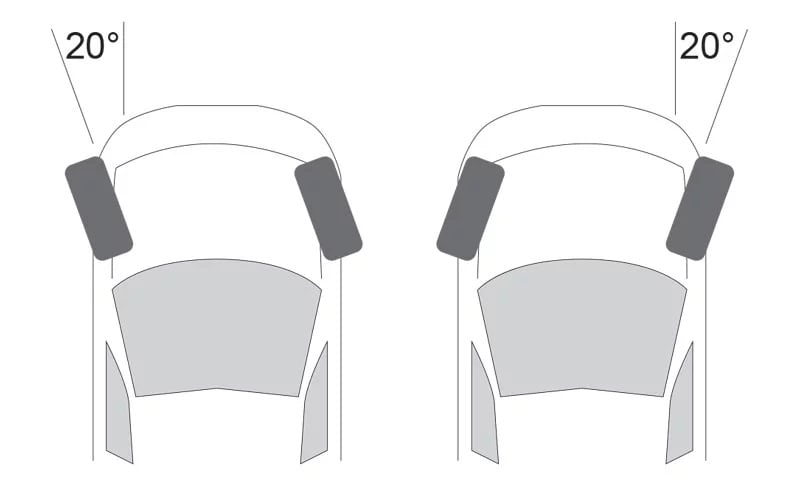Applies to: #28201, #28203, #28205, #28209 & #28210
Important:Your JOES caster/camber gauge is a precision measuring instrument and should be handled with care. It should be stored in a cool, dry place and should never be left sitting in the direct sun light. Vial breakage may occur at temperatures over 120° F.
Instructions
- Caster and Camber must be measured with the car on a flat, level surface.
- The car should be at static ride height with tires inflated to racing pressure.
- The suspension should be “settled” by bouncing or shaking the car.
- Always read measurements to the CENTER of the bubble.
To Measure Caster:
- Attach the caster/camber gauge to the spindle or hub.
- Turn the wheels 20° so the front of the tire is further out than the rear of the tire (20° out). This can be done by using turn plates or by lining up the angles on the end of the gauge nearest you so it is parallel with the centerline of the car.
- Rotate the gauge so the bubble in the small vial closest to you is centered.
- Turn the knurled knob on the top of the gauge until the bubble in the center vial reads zero.
- Turn the wheels 20° past straight in the opposite direction (40° total sweep in).
- Rotate the gauge so the bubble in the small vial closest to you is centered.
- Read the caster angle on the center vial. Each mark represents 1/2°.
To Measure Camber:
- Turn the wheels so they point straight ahead.
- Attach the caster/camber gauge to the spindle or hub.
- Rotate the gauge so the bubble in the small vial closest to you is centered.
- Camber is shown on the two outer vials. The left vial reads positive (+). The right vial reads negative (-). Each mark represents 1/4°.

